|
| Author |
Message |
darz5150
Member
|
# Posted: 7 May 2025 06:40pm
Reply
Well the bee traps I made still seem to be working fine.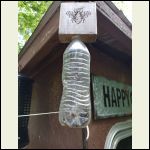
Screenshot_20250507.png
| 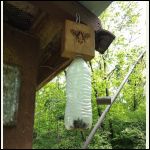
Screenshot_20250507.png
|  |  |
|
|
toyota_mdt_tech
Member
|
# Posted: 7 May 2025 08:37pm
Reply
Wasp, not honey bees?
|
|
darz5150
Member
|
# Posted: 7 May 2025 09:07pm
Reply
They are the yellow jackets that bore into wood. Carpenter bees? For the wasps, I have been using dish detergent and water in a sprayer.
I wouldn't use anything that would kill the honey bees.
|
|
toyota_mdt_tech
Member
|
# Posted: 9 May 2025 07:53am
Reply
Wonder if that is like mason bees? I know lots of beekeepers who create a home for mason bees, take a chunk of wood and bore lots of little drill holes in it.
Mason bees are good pollinators, not sure on the carpenter bees.
Good work on preserving those honey bees.
|
|
Atlincabin
Member
|
# Posted: 9 May 2025 01:49pm
Reply
How do they get into the bottle? Through a hole in the wooden top? What keeps them from getting back out? We have wasp infestations every few years and would be good to know how to trap the buggers.
|
|
darz5150
Member
|
# Posted: 9 May 2025 02:54pm - Edited by: darz5150
Reply
I drill a hole up from the bottom, sized to fit the bottle cap. Then drill 1/2 inch holes from the sides upward at a 45° angle to meet the center hole.
Cut or drill out most of the bottle cap center and leave the threads, then glue it in place. Somehow they can't get out.
Then simply unscrew the water bottle and Empty when it's getting full.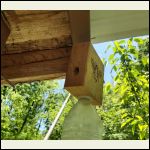
1/2 inch hole
| 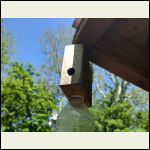
45° angle up to center hole
| 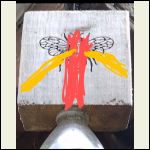
Kind of a crude drawing
|  |
|
|
Atlincabin
Member
|
# Posted: 12 May 2025 12:51pm
Reply
Great, thanks.
|
|
spencerin
Member
|
# Posted: 12 May 2025 02:16pm
Reply
Oh, carpenter bees! It's been a life-long battle me vs. them for years. I have some home-made traps and they've worked well (literally hundreds caught over the years), but sometimes a bee doesn't fall for it. So, every year there's always a divot or full-bored hole I need to fill in with wood filler.....
|
|
|
gcrank1
Member
|
# Posted: 12 May 2025 03:58pm
Reply
Think I saw a Yellowjacket or two going under our cabin deck yesterday 
I better start making a couple of these
|
|
|

